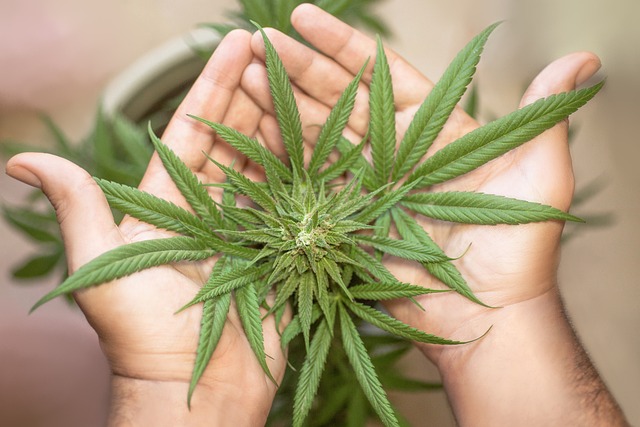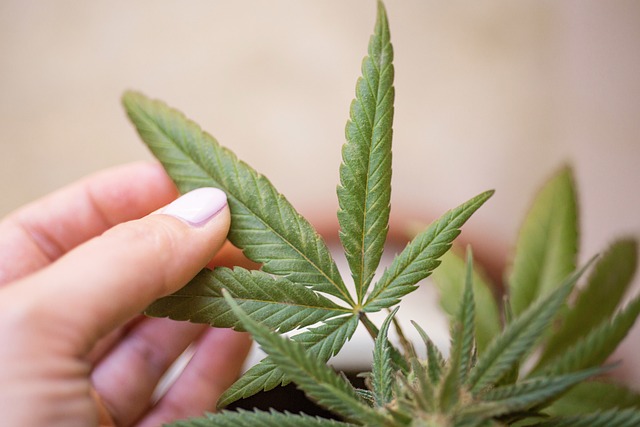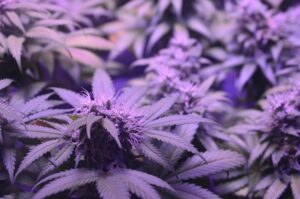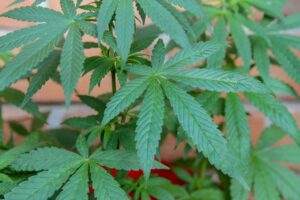
THCA flower, a non-psychoactive compound found in cannabis, is gaining attention as a natural analgesic for pain relief. Unlike its psychoactive counterpart THC, THCA does not induce a 'high' and engages with the endocannabinoid system to provide pain relief by influencing neurotransmitter release and immune responses. Its anti-inflammatory properties make it particularly effective for conditions like neuropathic pain. Vaporization is an optimal consumption method due to its precise dosing and the preservation of THCA, offering quick relief without the psychoactive effects of delta-9 THC. Other methods like teas, oils, and creams also provide relief but may require decarboxylation. It's essential to start with a low dose, adhere to local legal requirements, source high-quality products from reputable dispensaries or providers, and consult healthcare professionals for safe and effective use of THCA flower for pain management. Regular monitoring and adjustment based on individual experiences are key to minimizing side effects and achieving the best outcomes.
THCA flower, a non-psychoactive cannabinoid, is gaining attention in the realm of pain management. This article delves into the therapeutic potential of THCA (Tetrahydrocannabinolic Acid) for alleviating various types of pain. We explore its scientific basis for analgesic effects, optimal consumption methods to maximize relief, and navigating legal considerations for safe use. Whether you’re a patient or a curious consumer, understanding THCA flower’s role in pain relief is paramount. Join us as we uncover the nuances of this cannabinoid and its promising benefits for those seeking natural alternatives to manage their discomfort.
- Exploring the Potential of THCA Flower for Pain Relief: An Overview
- The Science Behind THCA and Its Analgesic Effects
- Optimal Ways to Consume THCA Flower for Maximum Pain Relief
- Navigating Legal Considerations and Safety When Using THCA Flower for Pain Management
Exploring the Potential of THCA Flower for Pain Relief: An Overview

Delta-9 tetrahydrocannabinol (THC) is well-known for its psychoactive effects, but another cannabinoid, tetrahydrocannabinolic acid (THCA), has been gaining attention for its potential therapeutic benefits, particularly in the realm of pain relief. THCA is the raw form of THC found in raw cannabis plants and certain cannabis derivatives. It’s non-psychoactive, allowing users to explore its medicinal properties without the high associated with its decarboxylated counterpart. Research suggests that THCA may interact with the body’s endocannabinoid system, influencing pain perception by modulating neurotransmitter release and immune system responses. This could be particularly beneficial for individuals seeking alternative methods for managing chronic or acute pain, as THCA flower products are often available in legal markets as smokable flowers, capsules, or tinctures. Users report anecdotal evidence of its efficacy in alleviating various types of pain, including neuropathic and inflammatory discomfort. As interest in cannabis-based therapies grows, the role of THCA flower as a potential pain relief option is increasingly under scrutiny by both researchers and consumers alike.
The Science Behind THCA and Its Analgesic Effects

Delta-9-tetrahydrocannabinol acid (THCA) is a naturally occurring cannabinoid found in the cannabis plant, known for its potential therapeutic properties. While THCA itself does not directly convert to the psychoactive compound delta-9-THC until it is exposed to heat or light, it exhibits various effects that are of significant interest, particularly in the realm of pain management. Studies have shown that THCA interacts with the body’s endocannabinoid system through its affinity for both CB1 and CB2 receptors, which play a key role in regulating pain and inflammation. This interaction is believed to underpin THCA’s analgesic effects, making it a promising compound for those seeking natural alternatives to opioid-based pain relief. The anti-inflammatory properties of THCA are also thought to contribute to its efficacy in alleviating various types of pain, including neuropathic pain, without the psychoactive ‘high’ associated with its decarboxylated form, delta-9-THC. THCA flower for pain relief is gaining traction among individuals who prefer cannabinoid products in their raw acid form, highlighting the importance of further research to fully understand and harness the full potential of this non-psychoactive cannabinoid.
Optimal Ways to Consume THCA Flower for Maximum Pain Relief

THCA flower, rich in tetrahydrocannabinolic acid (THCA), is gaining attention for its potential analgesic properties. Unlike its psychoactive counterpart, delta-9-THC, THCA does not induce a high but may offer substantial pain relief due to its interaction with the body’s endocannabinoid system. To maximize the pain-relieving benefits of THCA flower, it’s crucial to consider the consumption method. Vaporization is an optimal way to consume THCA flower for pain relief, as it allows for precise dosing and avoids the degradation of THCA into delta-9-THC during combustion. This method also provides faster onset of effects compared to ingesting edibles, which can take upwards of an hour to kick in. Additionally, vaporizing THCA flower minimizes lung irritation that is common with smoking.
For those who prefer not to inhale, other consumption methods include making teas or infusing oils and creams. These preparations are particularly useful for sustained relief over a larger area of the body. When creating these products, it’s important to decarboxylate the THCA flower first to activate the THC content. This process converts THCA into THC, which can then interact with the receptors in the endocannabinoid system to provide pain relief. Regardless of the method chosen, starting with a low dose and gradually adjusting as needed is a prudent approach to finding personalized relief without adverse effects. Consumers should always source high-quality THCA flower from reputable dispensaries or providers to ensure both safety and efficacy.
Navigating Legal Considerations and Safety When Using THCA Flower for Pain Management

Navigating THCA flower for pain relief requires a thorough understanding of both the legal landscape and personal safety protocols. It’s crucial to first verify the legality of THCA flowers in your jurisdiction, as laws vary widely across regions. Compliance with local regulations is paramount to avoid legal repercussions. Once you establish that THCA flower usage is permissible where you reside, consider sourcing from reputable dispensaries or licensed retailers to ensure product quality and safety. These establishments often provide certificates of analysis, which verify the cannabinoid profile, including THCa content, and confirm the absence of contaminants.
When integrating THCA flower into a pain management regimen, it’s important to start with a low dosage to gauge individual sensitivity and effects. Consulting with a healthcare provider beforehand is advisable, especially if you have underlying health conditions or are taking other medications. Proper dosing can mitigate adverse effects and maximize the potential therapeutic benefits for pain relief. Additionally, users should be mindful of their method of consumption, as inhalation may offer quicker pain relief compared to ingestion. Regardless of the method chosen, maintaining an environment that promotes safety and comfort will enhance the overall experience and contribute positively to pain management outcomes. Regular monitoring of dosage and effects, along with adherence to legal guidelines, are essential steps in safely using THCA flower for pain relief.
THCA flower offers a promising alternative for individuals seeking natural pain relief. The article has delved into the scientific underpinnings of THCA’s analgesic properties, providing insights into how this cannabinoid can effectively mitigate discomfort without the psychoactive effects associated with its counterparts. Whether through inhalation or ingestion, understanding the optimal consumption methods is crucial for harnessing THCA flower’s full potential. It’s equally important to navigate the legal landscape and prioritize safety when incorporating THCA flower into a pain management regimen. As regulations evolve and research continues to unfold, the role of THCA flower in addressing pain relief needs is likely to expand, making it a noteworthy subject for further exploration and consideration in healthcare practices.







